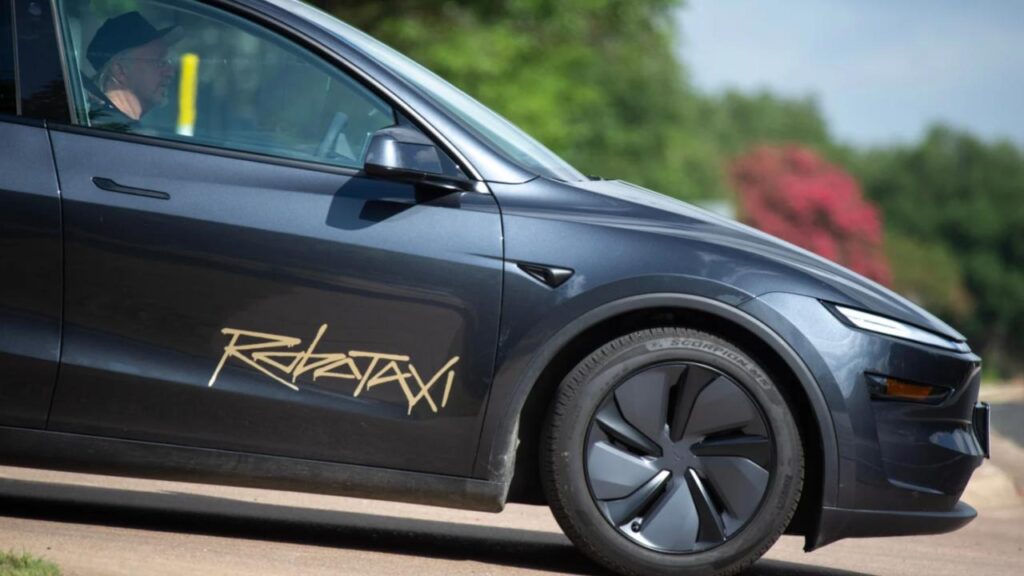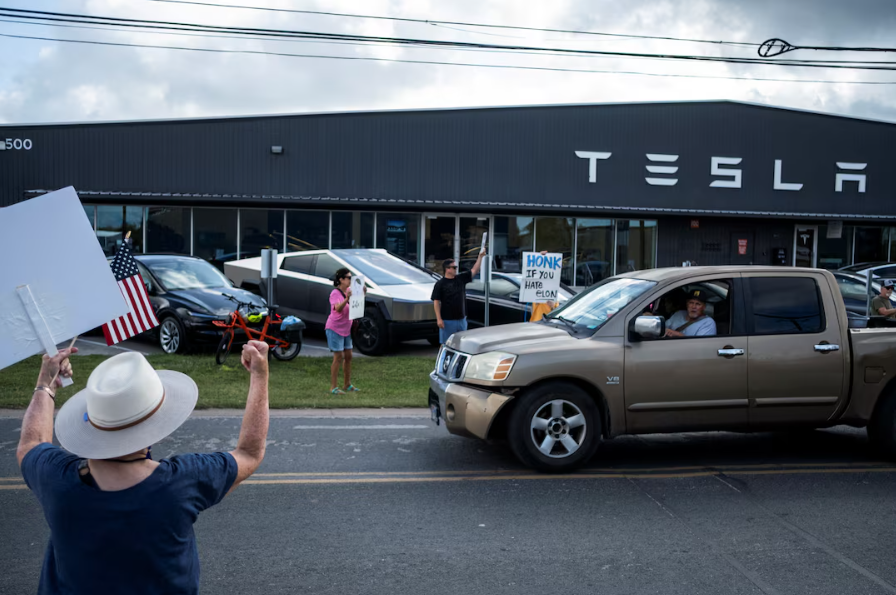In a groundbreaking move, Tesla has launched its first “robotaxi” service in Austin, Texas, marking a monumental leap in autonomous vehicle technology. The idea of self-driving cars is no longer a far-off fantasy—it’s becoming a reality, and Austin is leading the charge. But as these futuristic vehicles hit the roads, questions linger: Will they revolutionize transportation, or are we getting ahead of ourselves? In this article, we explore the implications of this bold step and examine whether Tesla’s robotaxis are truly the future of travel or just another tech experiment.

Austin, Texas Just Got Its First Tesla ‘Robotaxis’
| Insight | Stat |
|---|---|
| Tesla robotaxis are now operational in Austin | Tesla’s CEO announced the first deployment in June 2025 |
| Autonomous vehicles could reduce traffic fatalities by 90% | National Highway Traffic Safety Administration (NHTSA) report |
| Robotaxis are expected to lower transportation costs by 50% | Research by McKinsey & Company |
The launch of Tesla’s robotaxi service in Austin is a bold move toward the future of transportation. While it’s clear that autonomous vehicles have the potential to reshape the way we travel, we are still in the early stages of this technological revolution. There are significant challenges to overcome, but with continued innovation and cooperation from regulators, the dream of driverless cars could soon become a regular part of our daily lives.
What Are Tesla Robotaxis?
Tesla’s robotaxi service, which has recently begun operating in Austin, is a part of the company’s broader vision to lead the self-driving revolution. These vehicles are fully autonomous, requiring no driver to operate. Using Tesla’s advanced Full Self-Driving (FSD) software, the cars are able to navigate complex urban environments, pick up passengers, and get them to their destination—all without human intervention.
Imagine hailing a ride through an app, only for a car to arrive, drive you to your destination, and drop you off—all while you do nothing but relax. It sounds like something straight out of a sci-fi movie, but it’s now a reality in the heart of Texas.
The Vision Behind Tesla’s Robotaxi
The brainchild of Tesla CEO Elon Musk, this robotaxi initiative ties into the company’s grand vision of reducing human dependency on cars while making transportation more efficient. Tesla believes that autonomous vehicles can drastically cut down on traffic congestion, reduce accidents, and ultimately lower the cost of transportation for everyone. In fact, Musk has long predicted that fully autonomous cars will be one of the keys to reshaping entire industries, including insurance, logistics, and, of course, transportation.
These robotaxis are designed to be “hands-off” in every way. The cars will be electric, contributing to environmental sustainability by reducing carbon emissions. Tesla envisions a future where users can summon a robotaxi on-demand, making ownership of a personal vehicle less necessary, and possibly even obsolete.

The Technology That Powers the Robotaxis
Tesla’s self-driving cars rely on a combination of cameras, radar, ultrasonic sensors, and the company’s proprietary Full Self-Driving (FSD) software. This allows the car to perceive its surroundings and make driving decisions in real-time. While Tesla has been making progress in autonomous driving for years, the deployment of robotaxis in Austin marks a new level of autonomy.
FSD uses advanced machine learning algorithms to predict and respond to various road situations. The car learns from millions of miles of data collected from Tesla vehicles worldwide, improving its accuracy and decision-making over time. This vast amount of data helps ensure that the robotaxis can handle not just highways, but also dense urban traffic, tight turns, and unpredictable pedestrian behavior.
Are Robotaxis Ready for the Mass Market?
While Tesla’s robotaxi service is an exciting glimpse into the future of transportation, it’s important to consider whether the technology is ready for widespread use. The autonomous driving industry has faced its fair share of hurdles, with regulatory challenges and safety concerns frequently making headlines. Although Tesla’s FSD has shown significant progress, the technology is still not flawless. There have been reports of system failures and even accidents involving Tesla’s self-driving vehicles.
Furthermore, local laws and regulations around autonomous vehicles remain a major hurdle. While Austin is progressive in embracing new technologies, many cities across the country are still hesitant to allow driverless cars to operate on public roads.
For robotaxis to be truly successful, Tesla and other companies in the space will need to prove that these vehicles are safe, reliable, and compliant with local regulations. Public perception will also play a significant role—people need to trust that autonomous vehicles are as safe, if not safer, than human drivers.
The Benefits of Robotaxis
Despite the challenges, the potential benefits of robotaxi services are hard to ignore. Here are some of the key advantages:
- Safety: Autonomous vehicles are designed to eliminate human error, which is responsible for the majority of traffic accidents. Tesla claims that its FSD system can reduce traffic fatalities by up to 90%.
- Cost Savings: By eliminating the need for a human driver, Tesla’s robotaxis could drastically lower the cost of ridesharing services, possibly by as much as 50%, according to studies by McKinsey & Company.
- Environmental Impact: With electric vehicles at their core, Tesla robotaxis are cleaner than traditional gas-powered cars. As the grid becomes greener, the environmental impact of these vehicles will continue to decrease.
- Convenience: The convenience of a self-driving car arriving at your doorstep, without the hassle of parking or dealing with traffic, could change how we think about urban mobility.
The Challenges and Concerns
While the benefits are promising, there are some real concerns to consider before robotaxis can become the norm:
- Technology Reliability: As mentioned, Tesla’s FSD system is not foolproof. There have been instances of the system making errors in complex traffic situations.
- Job Displacement: The rise of autonomous vehicles could lead to job losses in industries such as driving, logistics, and even insurance. The transition to a driverless society will likely face significant resistance from labor groups.
- Regulatory Hurdles: Autonomous vehicles still face a patchwork of regulations across the U.S. Tesla will need to navigate local laws and work with lawmakers to ensure that robotaxis are allowed to operate on public roads.
- Public Trust: Many people are simply not comfortable with the idea of getting into a car that has no driver. Building trust in autonomous technology will take time.
Are Robotaxis the Future of Transportation?
So, are robotaxis the future of transportation? The short answer is: maybe. While the technology is certainly promising, there are still many hurdles to overcome before autonomous taxis become a mainstay on our roads. However, the launch of Tesla’s robotaxis in Austin is a significant step forward. It shows that autonomous vehicles can work in real-world conditions, and it opens the door for other companies to follow suit.
The future of transportation is likely to involve a mix of autonomous vehicles, traditional cars, and public transit. As for whether robotaxis will dominate the landscape, time will tell. If Tesla and other companies can continue to refine their technology and navigate the regulatory landscape, the widespread adoption of robotaxis may not be as far off as we think.
FAQs
How do Tesla robotaxis work?
Tesla robotaxis use a combination of cameras, sensors, and machine learning to navigate streets without human intervention. The cars are fully autonomous, meaning no driver is needed to operate them.
Are robotaxis safe?
While the technology is still being refined, Tesla claims that its robotaxis can reduce traffic fatalities by up to 90%. However, some concerns about the reliability of the technology remain.
Where are Tesla robotaxis available?
Currently, Tesla robotaxis are operational in Austin, Texas, but the company plans to expand the service to other cities in the near future, pending regulatory approval.






